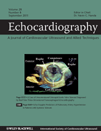Left Ventricular Twisting as Determinant of Diastolic Function: A Speckle Tracking Study in Patients with Cardiac Hypertrophy
Conflict of interest: The authors declare that they have no conflicts of interest.
Abstract
Purpose: Left ventricular hypertrophy (LVH) can develop in response to training with morphological changes in the heart and to pathological increase in afterload such as in essential hypertension. Deformation analysis using two-dimensional (2D) strain echocardiography can detect early systolic function abnormalities in patients with LVH. The aim of this study was to characterize left ventricular twisting (LVT) modifications, in professional athletes, compared with control subjects and with patients with hypertensive cardiopathy. Methods: Seventy-six patients were enrolled: 37 professional athletes with cardiac hypertrophy (group A), 22 patients with early hypertensive cardiopathy (group B) cross-matched for LV mass index, and 17 healthy controls (group C), with no evidence of cardiac hypertrophy. All patients had no concomitant cardiac disease. All patients were investigated at rest using transthoracic echocardiography. LVT was obtained with speckle tracking analysis, using dedicated software. Results: LVT was reduced in group A compared to group B and C (group A: 8.0°± 2.4°; group C: 10.3°± 2.3°; group B: 16.0°± 4.2°; P < 0.01). In overall population, LVT showed a significant correlation with transmitral flow pattern (r =–0.58, P < 0.01) and with age (r =–0.57, P < 0.01). LVT showed the best predictive value to diagnose diastolic dysfunction (AUC: 0.86, P < 0.0001). Conclusions: 2D strain can identify specific patterns of myocardial deformation in professional athletes, controls, and patients with early hypertensive cardiopathy. In our study LVT showed a parallel trend with modifications of diastolic function and could represent a promising tool to differentiate functional cardiac hypertrophy from hypertensive cardiac hypertrophy. (Echocardiography 2011;28:892-898)




